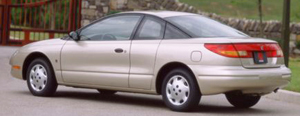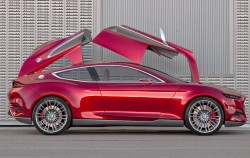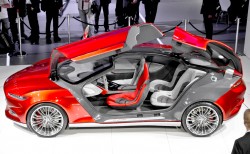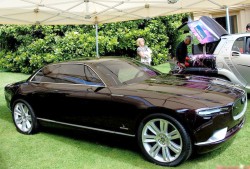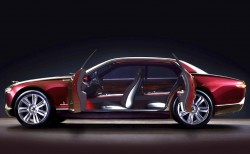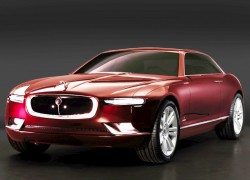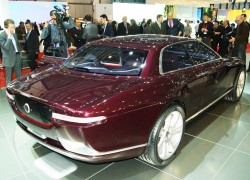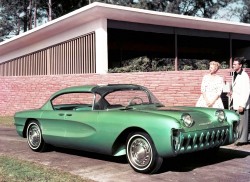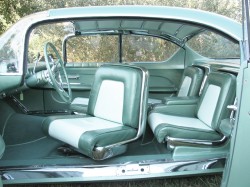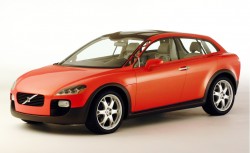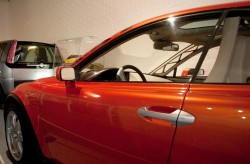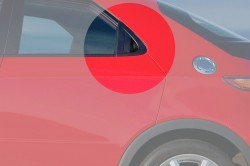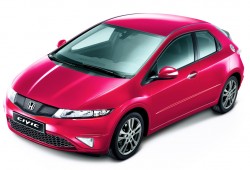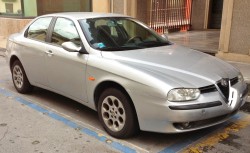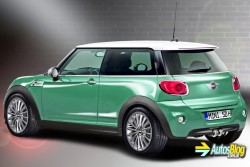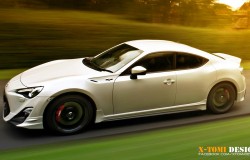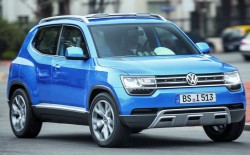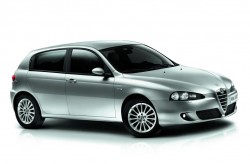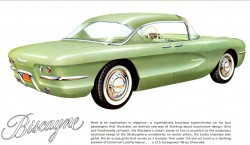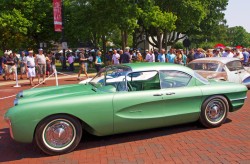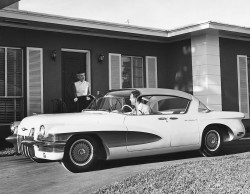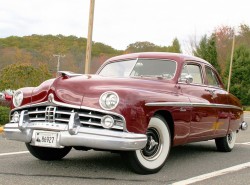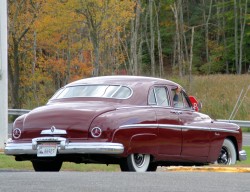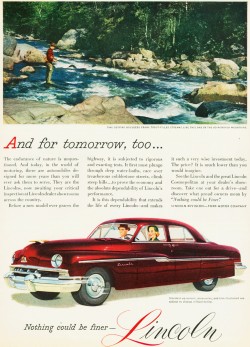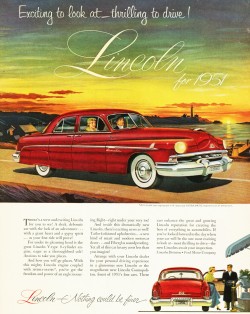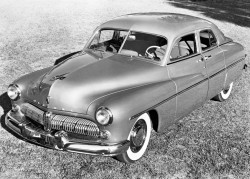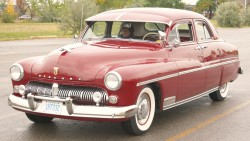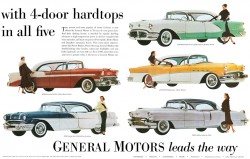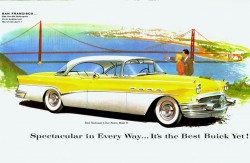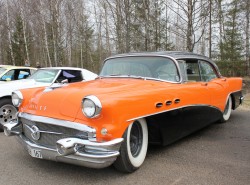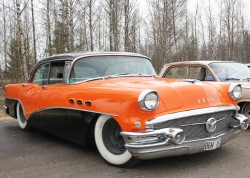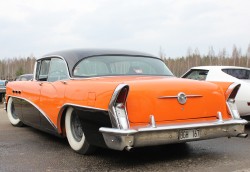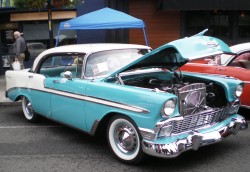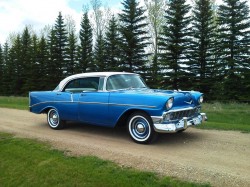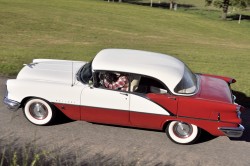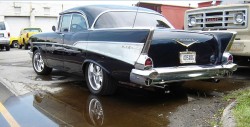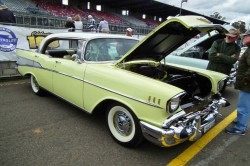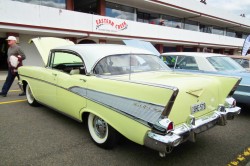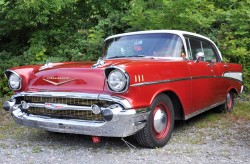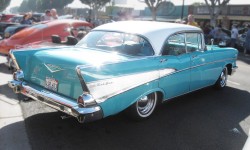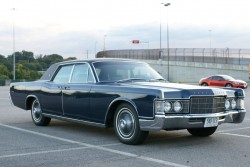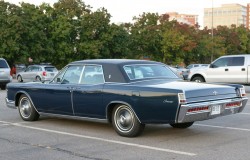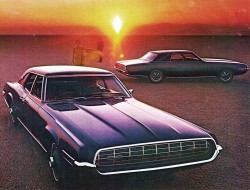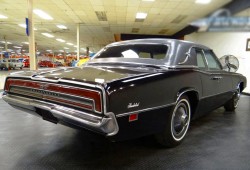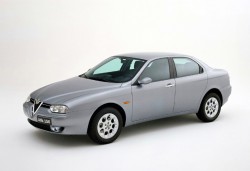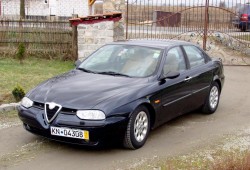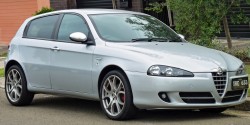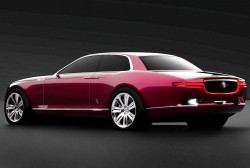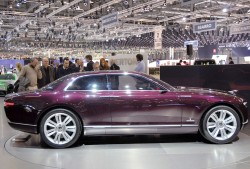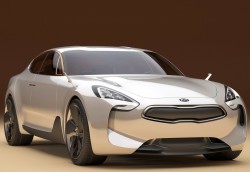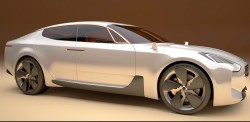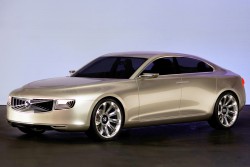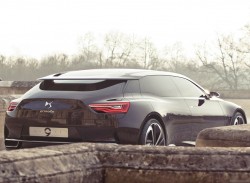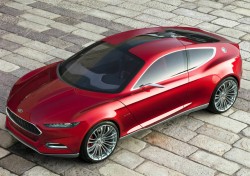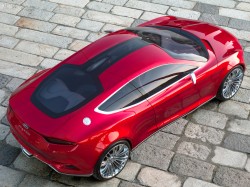Attending the press preview of the 2014 New York International Auto Show, we heard a lot of talk from automakers about “4 door coupe” models. We feel they need to rethink their definition of what a 4-door coupe is, because none of their current offerings even come close. So to assist the automotive industry, below is a list of what should and should not be considered a four door coupe.
1. A “four door coupe” should actually have four adult size doors. Whether they are hinged in the front or the back is not important. Miniature-sized rear seat access doors such as the ones found on a current Mini Clubman, or a 1999 Saturn SC do not count. The rear doors should open freely on their own and not require front doors to be opened first.
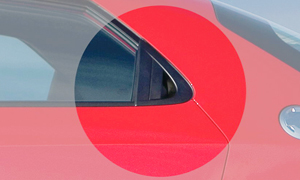
Handles on rear doors should be as disguised as possible, such as on this 2014 Honda Civic 5-door hatch.
2. The handles for the rear set of doors should be as disguised as possible. In other words, at quick glance, the vehicle should not even appear to have a set of rear door handles. They can be blended into C-pillars on traditionally-hinged doors, or made to appear as an extension of the front door handles on rear-hinged doors. We’ll even consider “suicide door” handles such as those found on 1960s Lincolns acceptable, even though there are several inches of space between them.
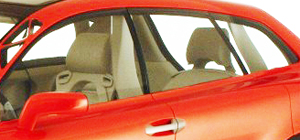
The Volvo Safety Concept Car of 2001 shows frameless doors, rwith structural pillars mounted at an inboard location inside the vehicle. These can give the appearance of a pillarless coupe.
3. The vehicle’s B-pillar should be as disguised as possible. In an ideal world, doors would be frameless, all four windows would roll down fully, and there would be no pillar between those front and rear side windows – just like pillarless hardtop sedans that were everywhere from 1956 through 1978. Realistically, windows can still be frameless and have proper b-pillars behind them.

We feel hatchbacks and SUVs can also qualify as 4-door coupes. This Mini Cooper concept features hidden rear doors, and a door handle mounted discreetly on the C-pillar.
4. A “four-door coupe” does not need to be limited to the category of traditional three-box automotive designs featuring a hood, passenger compartment, and trunk. We feel hatchbacks, fastbacks, and even sport utility vehicles can qualify if the door design is integrated well enough that it appears at first glance to have only two doors.

Extra side windows behind the rear doors shout traditional sedan, and no 4-door coupe should have them.
5. A real “four-door coupe” should have no extra windows along the side of the vehicle aft of the rear doors. They may enhance visibility, but they shout traditional four-door sedan.
SLIDE SHOW – CLICK ON ANY OF THE PICTURES IN THE SLIDE SHOW BELOW TO EXPAND TO FULL SIZE. USE ARROWS UNDERNEATH PICTURES TO SCROLL BACKWARD OR FORWARD.
- The Ford Evos concept car shown in 2012 may be the state of the art in “four door coupes”. Rear doors are completely hidden, yet offer full functionality and entrance room when needed.
- A view of the Ford Evos concept “four door coupe” with doors open. Because it’s only a concept car, it does not need to pass safety tests – witness the absence of typical b-pillar structural element.
- The Jaguar B99 concept car shown during 2011 is another excellent example of what a “four door coupe” should be.
- On the 2011 Jaguar B99 concept car, rear doors are hinged to open from the rear – “suicide door style”. Like the Ford Evos, the B99’s concept car status did not require it to have actual structural reinforcements of a B-pillar that would be needed in the real world.
- From most views, the jaguar B99 appears to be a two-door coupe. Rear door handles are separate, but blend effectively with the front ones.
- The B99’s rear window is artfully shaped and sized to resemble the fixed window of a coupe. Because the B99 actually looks like a two-door, we recommend BMW, Mercedes, and Audi study it for their next “four door coupe” models.
- Show cars with suicide doors styled to look like coupes are nothing new. Shown is the Chevrolet Biscayne concept car of 1955.
- Like the ideal 4-door coupe, the 1955 Chevrolet Biscayne concept car had frameless doors and no B-pillars – creating a wider open space usually found on coupes.
- The Volvo Safety Concept Car of 2001 shows frameless doors, with structural pillars mounted at an inboard location inside the vehicle.
- The inboard-mounted B-pillars, when well executed, can add to the overall appearance of a pillarless coupe.
- Handles on rear doors should be as disguised as possible, such as on this 2014 Honda Civic 5-door hatch.
- The Honda Civic 4-door hatch (sold in non-U.S. markets) features rear door handles that are well-hidden enough to meet our 4-door coupe qualifications.
- Alfa Romeo 156 sedans from 1998-2007 were built with true four-door coupe styling. Rear door handles were hidden in the C-pillars, making the rear doors almost invisible.
- This design study for the upcoming Mini Cooper 4-door hatchback also shows rear door handles hidden in the C-pillar. The trailing edge of the rear door looks like a normal body panel seam. We sincerely hope the next 4-door Cooper takes this coupe form.
- A styling study for how a four-door Subaru BRZ / Scion FR-S might be cleverly disguised to resemble a coupe. This car definitely qualifies as a “four door coupe”.
- Since no side windows exist aft of the rear doors on this VW Taigun concept SUV, we’ll consider this an effectively-designed four door coupe also.
- Alfa Romeo took the four door coupe styling used on the 156 sedan, and applied to its neatly styled 147 hatchback of 2001-2010.
- Another view of the 1955 Chevrolet Biscayne concept car, as seen in GM literature from the time.
- The 1955 Chevrolet Biscayne concept car at a recent car show – after being fully restored from deteriorated condition.
- General Motors also created another four-door coupe concept car, in the form of the 1955 Cadillac LaSalle.
- Suicide doors were nothing new in 1949. However, 1949-51 Lincoln and Mercury “sport sedans” were among the first 3-box vehicles to include them without the presence of extra side windows.
- From certain angles at quick glance, this 1949 Lincoln Cosmopolitan Sport Sedan takes on the appearance of a two door. We’ll consider it an early “4-door coupe”.
- An ad for the 1951 Lincoln Cosmopolitan Sport Sedan.
- 1951 Lincoln Sport Sedan advertisement.
- 1949-51 Mercurys used the Lincoln Cosmopolitan Sport Sedan body, and have long been favorites among car collectors.
- Like Lincolns from the same time frame, 1949-51 Mercury Sport sedans can also be considered early “four-door coupes”.
- Automakers began using pillarless styling on 4-door sedans for the 1956 model year. These are known as hardtop sedans, and this General Motors ad shows all such models from Chevrolet to Cadillac.
- With swooping chrome trim, two-tone paint, and contoured door panels that curved where a two-door’s would, this 1956 Buick Roadmaster hardtop sedan meets our criteria of what a “4-door coupe” is.
- Smaller 1956 Buick hardtop sedans such as this Special model also embodied the “4-door coupe” concept.
- 1956 Buick Special hardtop sedan, right front view.
- 1956 Buick Special hardtop sedan, left rear view.
- Smaller 1956 Chevrolet hardtop sedans also used pillarless doors, trim, two-tone paint, and contoured styling to enter the realm of 4-door coupes.
- The 1956 Chevrolet 210 model was lower-priced than the Bel Air. While it didn’t have the Bel Air’s decorative trim and two-tone paint, it used similar styling elements to resemble a coupe more than a traditional sedan.
- A 1956 Oldsmobile hardtop sedan, which also used paint and trim trickery to fool the eye into looking more like a 2-door coupe than a traditional sedan.
- A popular modification on 1957 Chevrolet hardtop sedans was to remove the rear door handles entirely to resemble a coupe. We don’t feel this ’57 Bel Air would look as good if the basic lines of the car weren’t those of a 4-door coupe to begin with.
- 1957 Chevrolet Bel Air hardtop sedan, right front view.
- 1957 Chevrolet Bel Air hardtop sedan, left rear view.
- 1957 Chevrolet Bel Air hardtop sedan, with moon hub caps.
- 1957 Chevrolet Bel Air hardtop sedan, right rear view.
- After experimenting with suicide doors on Lincoln and Mercury “Sport Sedans” of 1949-51, Ford went back to rear hinged doors on 1961-69 Continentals, and 1967-71 Thunderbirds.
- 1969 Lincoln Continental. We’d qualify Lincoln Continental sedans from 1961-69 as 4-door coupes because they did not look much different from the coupe version at a three-quarters glance.
- Ford adopted “suicide door” styling on a newly offered Thunderbird sedan model for 1967. Shown with the 4-door coupe (foreground) is an actual 2-door model (background).
- Designers of the 1967-71 Thunderbird sedan attempted to mimick the coupe’s lines as much as possible. We consider these T-Bird sedans to be alot closer to a 4-door coupe than anything BMW or Mercedes pass off as such.
- Alternate view of a Alfa-Romeo 156 four-door coupe featured earlier in this slideshow.
- 2006 Alfa Romeo 156 sedan / 4-door coupe.
- 2008 Alfa Romeo 147 four-door hatchback.
- Left rear view of the 2011 Jaguar B99 four-door coupe concept.
- Right side view of the 2011 Jaguar B99 four-door coupe concept.
- Kia displayed an impressive “4 door coupe” concept on the 2011 auto show circuit. Rear doors are hinged backwards, and this vehicle appears much more like a coupe than anything from BMW or Mercedes.
- Kia’s four-door coupe concept on the 2011 auto show circuit is an inspiration to all those looking to create true 4-door coupes.
- Volvo also caught the 4-door coupe bug on the 2011 auto show circuit, creating the Concept Universe model.
- A close look at Citroen’s European-market Numero 9 confirms it’s actually a 4-door hatchback, not a 2-door.
- Ford Evos styling concept – the truest “4 door coupe” we’ve seen so far.
- Ford Evos styling concept – the truest “4 door coupe” we’ve seen so far.

